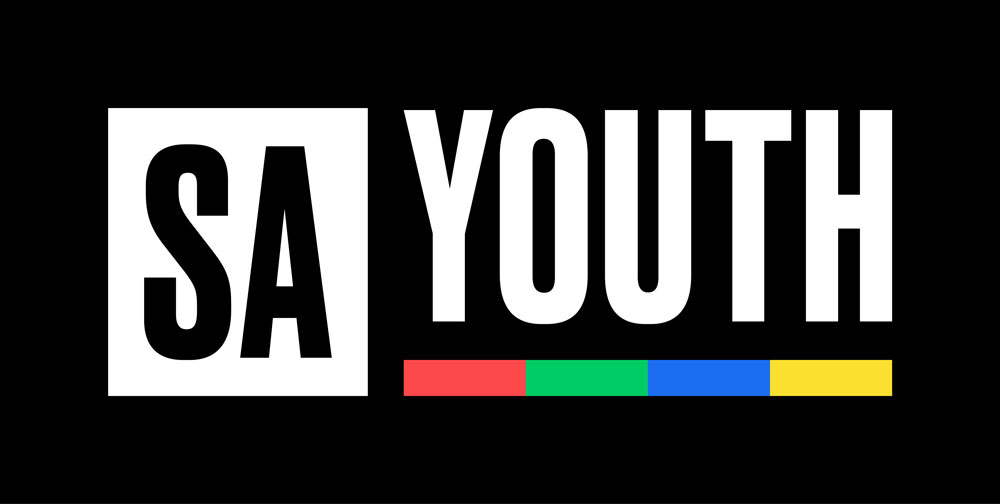

SA Youth connects young people to work and employers to a pool of entry level talent.
Are you a work-seeker?
February 2019
During the recent State of the Nation address, South Africa’s President Cyril Ramaphosa reiterated the need to give young people a real start in the world of work. Harambee Youth Employment Accelerator partners with others to break the barriers youth face on their journey to a first job. We congratulate the class of 2018 who wrote and passed the National Senior Certificate exams last year! While we celebrate the increase in the pass rate from 75% to 78%, the reality is that too few of these youth will end up in jobs.
This edition of Breaking Barriers explores the challenges youth face in the transition from school to work, and the solutions that are needed.
It shares Harambee’s latest insights from supporting over 500,000 unemployed work-seekers.
Brought to you in partnership with:
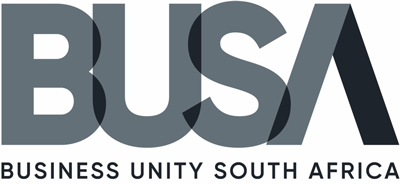
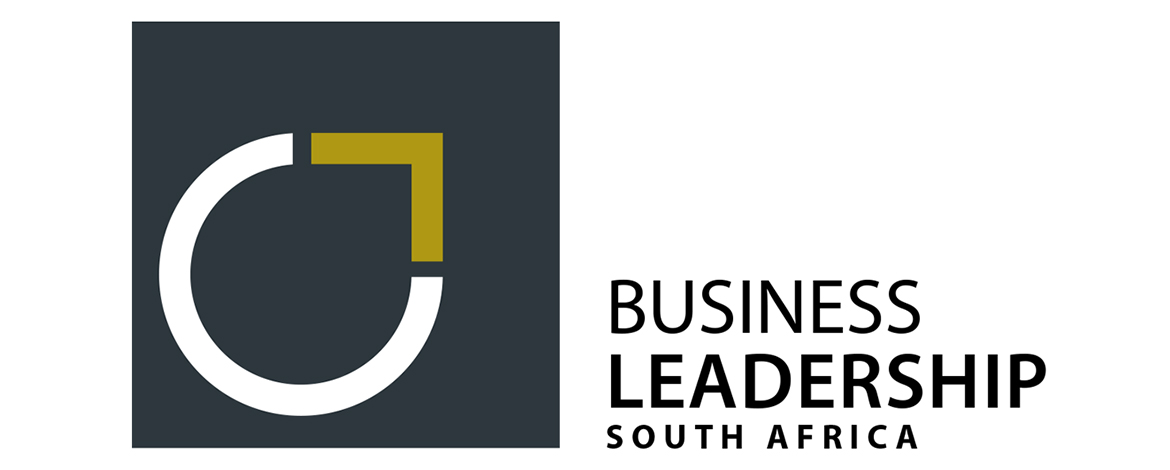
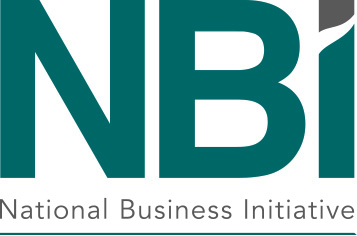
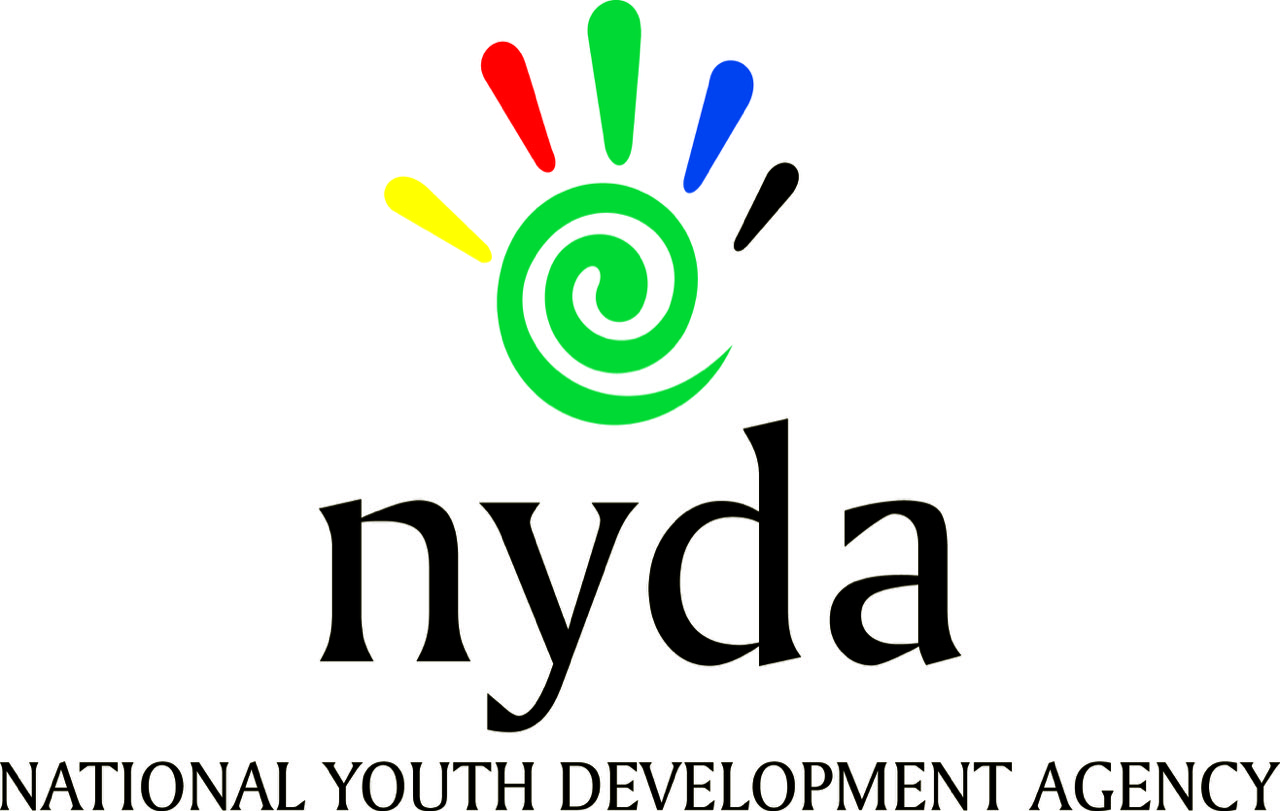
According to the latest Statistics South Africa Quarterly Labour Force Survey (QLFS), the employment rate for youth aged 18 – 34 increased by 0.5 percentage points to 52.3% over the past quarter.
Harambee’s employment rate is lower than that of the Quarterly Labour Force Survey because Harambee reaches excluded youth who tend to face higher structural barriers to employment. However Harambee’s employment rate shows an uptick on the previous quarter commensurate with seasonality in hiring.
When looking at youth unemployment over time, compared to the same period five years ago, there are 60,000 fewer young people working now than there were then despite the labour force in this group growing by almost 1 million people. Over a five-year period almost 1 million youth entered the labour market with no net new jobs being created.
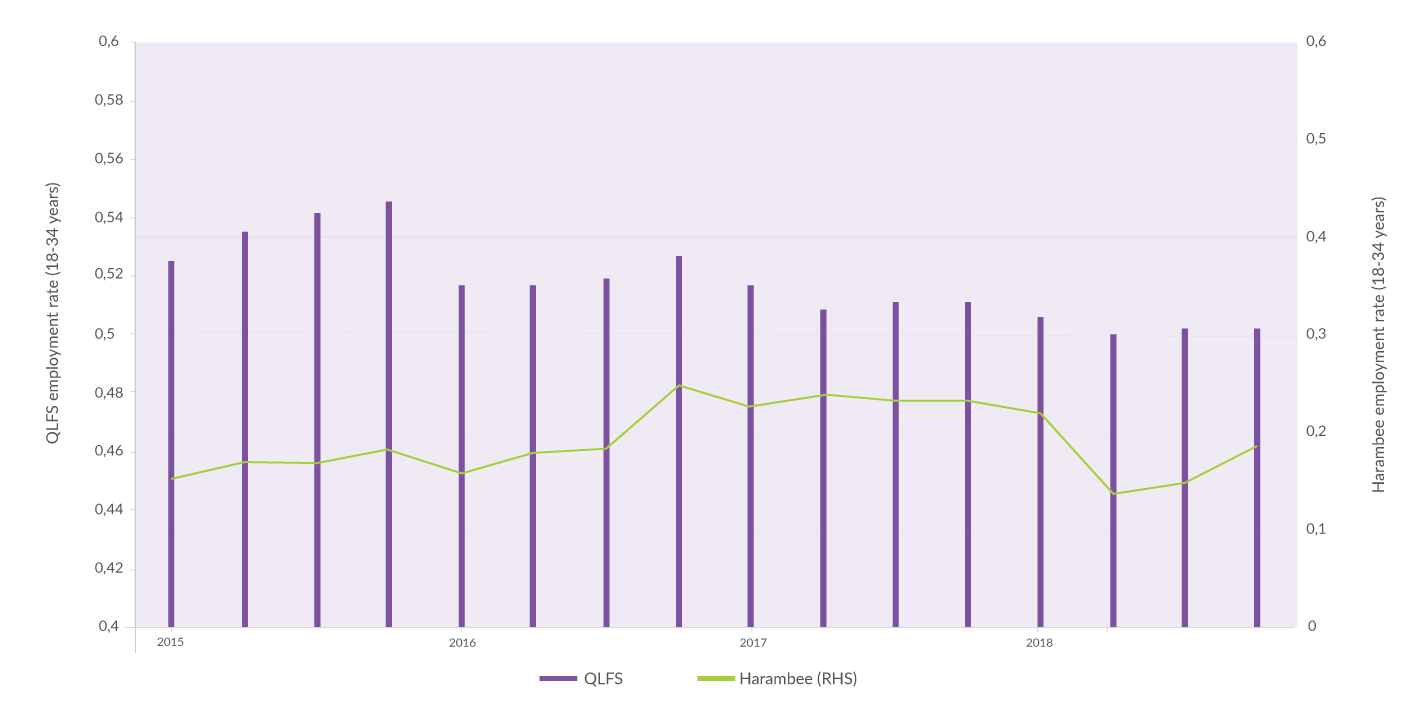
INSIGHT 1
In comparing the employment outcomes for Harambee youth who have completed their high schooling versus those who haven’t, we see that those with a high school qualification are more likely to be active in the economy.
This is supported by analysis conducted by the research from the University of Cape Town. The South African Labour Development Research Unit found an 8% difference in economic activity and connection to the labour market between youth who completed matric versus those who didn’t.
Figure 1: Schooling still matters for work
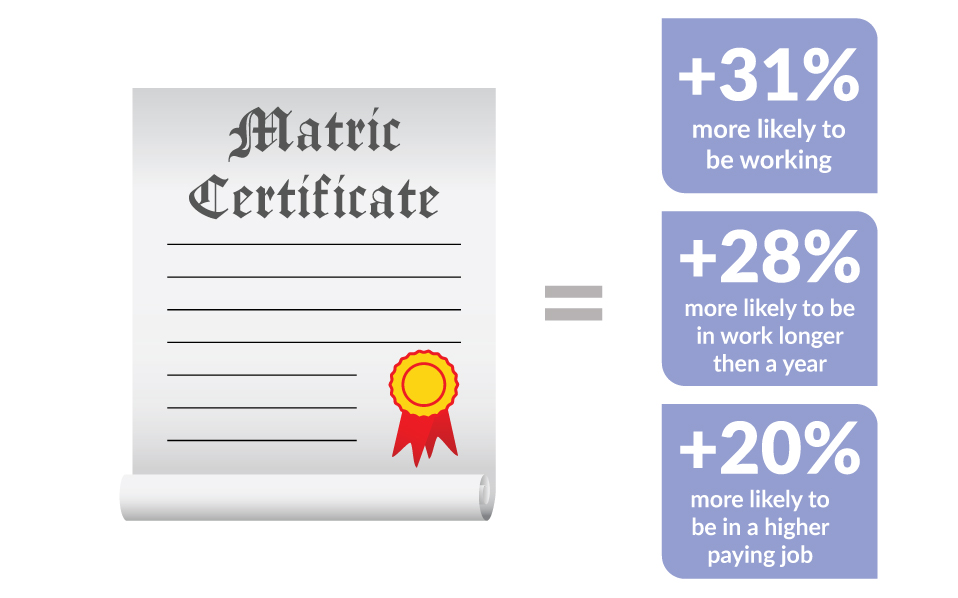
Source: Harambee data
INSIGHT 2
Often employers use a young person’s school results, in particular their mathematical ability, as the basis for determining their suitability for jobs. However, these aren’t necessarily predictors of the young person’s ability to perform and succeed at work. For example, one of Harambee’s matching tools is a learning potential assessment that measures the ability to learn new information quickly.
A recent Harambee analysis demonstrates that if employers hire on the basis of numeracy scores – and not look at learning potential – they would exclude nearly 90% of youth who might have the ability to learn what is needed for the job.
Figure 2: School results are not always a predictor of performance
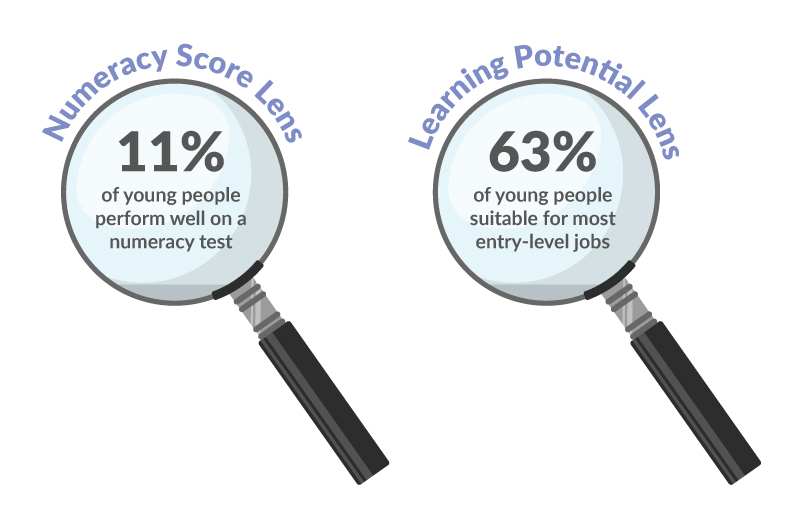
Source: Harambee’s own data
INSIGHT 3
Based on our work over the last eight years with 500 employers and 500,000 work-seekers, we have come to understand that employability maps to six broad dimensions, of which skills (functional competencies) is only one. Harambee’s Employability Map represents what we know about the requirements of entry-level jobs and young people and how we can enable and support a young person’s pathway to find and secure an opportunity.
Figure 3: Harambee Employability Map™
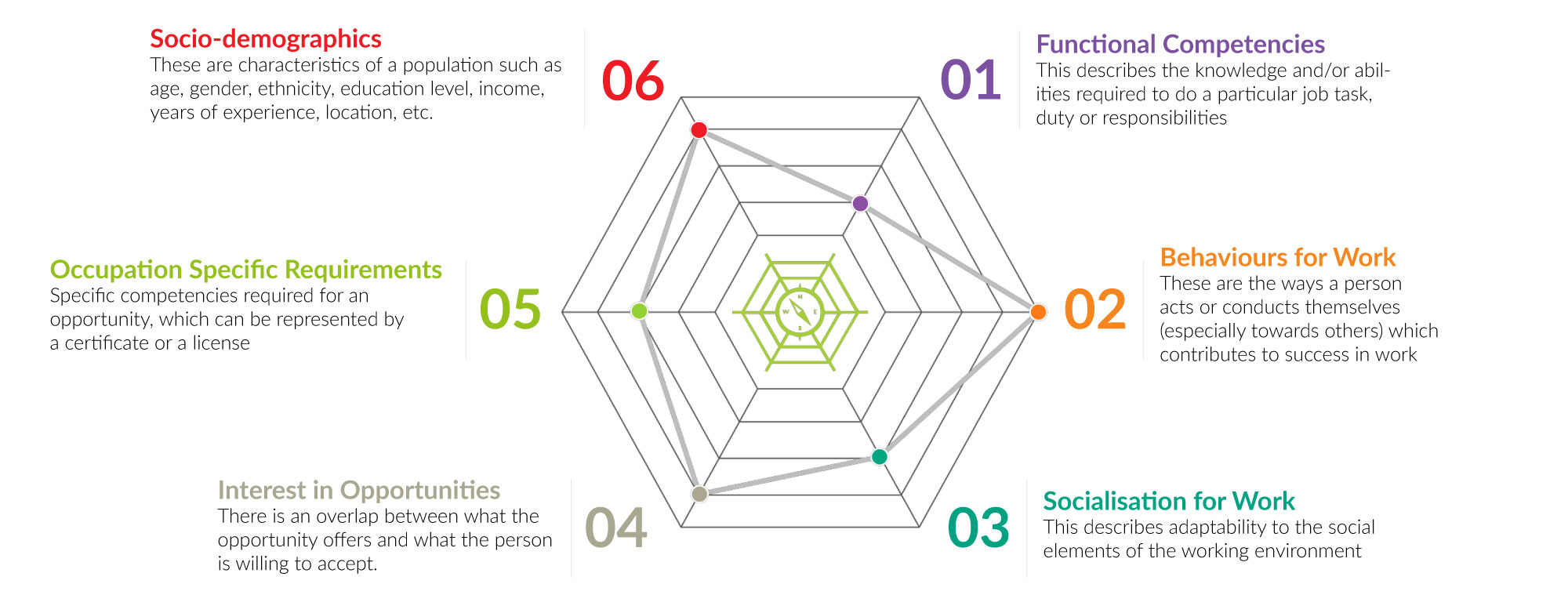
Source: Harambee’s own data
INSIGHT 4
A tertiary degree is not a reality for many South African youth, they need new pathways. University is not a destination for many who start school. In fact, the qualifications pyramid in South Africa shows that only 4 youth will graduate with a university degree for every 100 who start schooling. Yet, our system is too focused on formal qualifications and higher education. We need to create alternative pathways to work that are shorter, more cost-effective and can equip youth with what is needed for work. Harambee’s partnerships to create new pathways for youth to work in installation, repair and maintenance is one example of defining new requirements with industry partners and TVET colleges.
Figure 4: Qualifications hierarchy graph
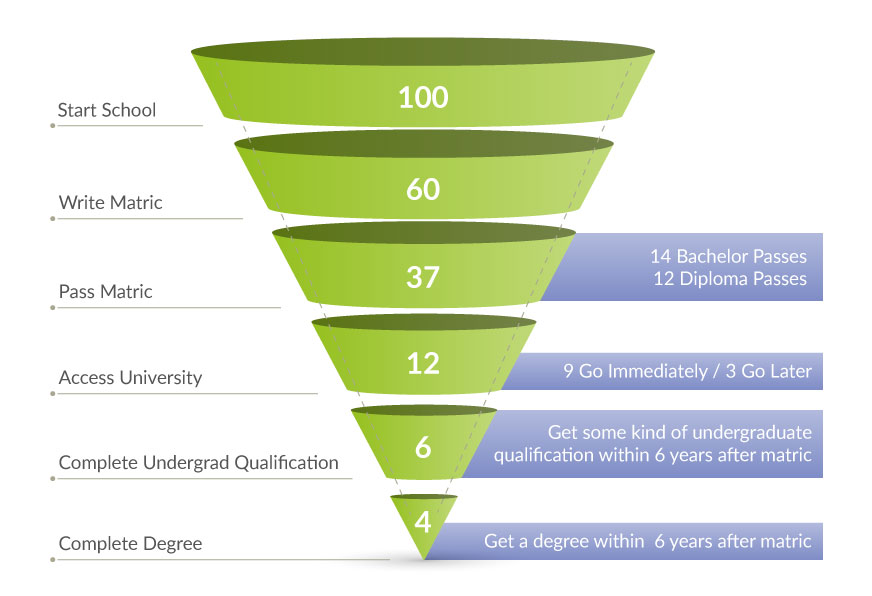
Source: Higher education access and outcomes for the 2008 national matric cohort’, Hendrik van Broekhuizen, Servaas van Der Berg, and Heleen Hofmeyr, Stellenbosch University working papers, 2016